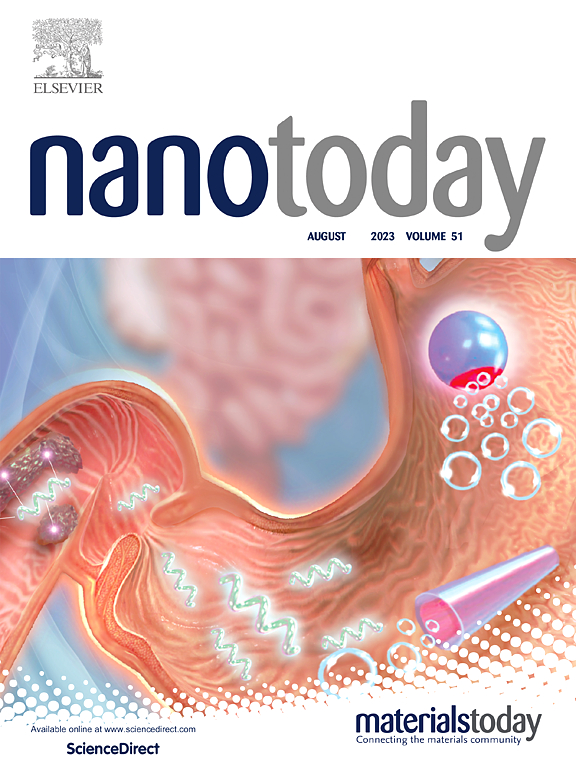工程肾靶向纳米酶通过ROS清除和免疫调节实现AKI的序贯治疗
IF 13.2
1区 材料科学
Q1 CHEMISTRY, MULTIDISCIPLINARY
引用次数: 0
摘要
急性肾损伤(AKI)的有效对策尚不理想。在AKI进展过程中,巨噬细胞从促炎状态及时适当地过渡到抗炎状态对于解决急性炎症和促进组织修复至关重要。及时清除过量活性氧(ROS)和促进巨噬细胞M2极化是AKI进展的关键决定因素。因此,我们报道了一种工程化的肾脏靶向纳米酶,由一种新的二维纳米材料MXene纳米片,通过抗补体成分5a适配体(ac5a-Apt)和镁离子(Mg2 +)的表面偶联而构建。AKI后,工程纳米酶不仅可以靶向肾脏,还可以在ac5a-Apt的引导下导航到炎症区域,清除过量的ROS,抑制C5a-C5aR补体系统激活,促进巨噬细胞M2极化。重要的是,在MXene与ROS反应并降解后,表面负载的Mg2+被释放,进一步抑制MAPK/ NF-κB信号通路,从而实现顺序治疗。工程肾靶向纳米酶为序贯AKI治疗提供了一种基于ROS清除和免疫调节的新策略。本文章由计算机程序翻译,如有差异,请以英文原文为准。
Engineered renal-targeting nanozyme achieves sequential treatment of AKI through ROS clearance and immune modulation
Effective countermeasures for acute kidney injury (AKI) remain unsatisfactory. During AKI progression, the timely and appropriate transition of macrophages from pro-inflammatory to anti-inflammatory states is critical for resolving acute inflammation and promoting tissue repair. Timely clearing of excess reactive oxygen species (ROS) and promotion of M2 polarization of macrophages are key determinants of AKI progression. Accordingly, we report an engineered renal-targeting nanozyme constructed from a novel two-dimensional nanomaterial, MXene nanosheets, via surface conjugation of the anticomplement component 5a aptamer (ac5a-Apt) and magnesium ions (Mg2 +). After AKI, the engineered nanozyme can not only target the kidneys but also navigates to inflammatory areas under the guidance of the ac5a-Apt, clear excessive ROS, inhibits the C5a-C5aR complement system activation and promote M2 polarization of macrophages. Importantly, after MXene reacts with ROS and degrades, the surface-loaded Mg2+ is released, further suppressing the MAPK/ NF-κB signaling pathway to achieve sequential therapy. The engineered renal-targeting nanozyme offers a novel strategy based on ROS clearance and immune modulation for sequential AKI treatment.
求助全文
通过发布文献求助,成功后即可免费获取论文全文。
去求助
来源期刊

Nano Today
工程技术-材料科学:综合
CiteScore
21.50
自引率
3.40%
发文量
305
审稿时长
40 days
期刊介绍:
Nano Today is a journal dedicated to publishing influential and innovative work in the field of nanoscience and technology. It covers a wide range of subject areas including biomaterials, materials chemistry, materials science, chemistry, bioengineering, biochemistry, genetics and molecular biology, engineering, and nanotechnology. The journal considers articles that inform readers about the latest research, breakthroughs, and topical issues in these fields. It provides comprehensive coverage through a mixture of peer-reviewed articles, research news, and information on key developments. Nano Today is abstracted and indexed in Science Citation Index, Ei Compendex, Embase, Scopus, and INSPEC.
 求助内容:
求助内容: 应助结果提醒方式:
应助结果提醒方式:


